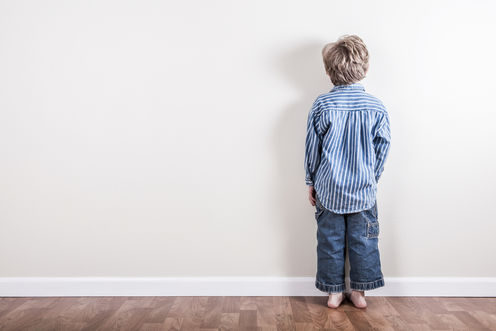Oceanía/Australia/Agosto del 2017/Noticias/https://theconversation.com
One of the more frustrating assumptions in the mix of modern parenting advice is the “tabula rasa” idea that all kids are born as identical clean slates.
I suspect the increase in this attitude is partly due to the loss of large families. With the total fertility rate in Australia down to 1.88 children per woman, the acceptance that some people are lucky enough to get a “beginner’s baby”, compared with one who takes them straight to advanced level, has very much diminished.
Somewhere along the line we have lost the appreciation of intrinsic personality differences, which has led to a frustratingly common belief that a one-size-fits-all approach to shaping behaviour and discipline will always work.
Further reading: How to discipline your children without rewards or punishment
Someone frequently will preach intervention X, which you try, and it doesn’t work. What’s the typical response? “Oh you mustn’t have done it properly” rather than “oh, your kid mustn’t share the same motivations as my kid, let’s figure out what drives them and work with that”.
One size doesn’t fit all
Yet research tells us that babies differ wildly in their natural temperaments, as early as in the womb.
Here’s a pair of babies I prepared earlier, in the same womb, at the same time. What does this picture below tell you about their temperament and subsequent personality as they’ve aged?

If you guessed the boy on the right is now an extroverted, adventurous, sociable young man – you guessed right. And if you guessed the girl on the left is a highly cautious introvert (despite 21 years of relentless CBT from her mother) – spot on.
So how could these two children possibly be expected to respond favourably to the same discipline techniques? Can you imagine Anxious Baby Girl knowingly breaking a rule; can you imagine Novelty-Seeking Boy being able to stick to one?
This is where modern-day parenting advice regarding “appropriate” disciplinary techniques typically falls apart. The assumption is that all children are alike, but what happens if you don’t have angel-baby who is interested in pleasing others or responds positively to praise?
What if your child gets excited by pushing boundaries and breaking rules, is aggressive and angry, morose and difficult, even downright anti-social? All of these are possible personality styles – so how can you best manage problematic behaviour in the context of such different temperaments?
Tailoring the response to each child
The answer lies in understanding your child and what makes them tick.
An easy mistake to make is trying to apply a punishment (a response designed to reduce or extinguish a behaviour) but in doing so, inadvertently supplying a reward (which reinforces and increases the behaviour).
If your child loves attention for example, any form of attention (including yelling or a smack) may well act as reward. For example, my attention-seeking adult boy now invests a substantial amount of energy winding up his grandmother to earn himself a “smack” – which he finds hysterically funny.
Time-out, on the other hand, especially if it removed his audience, was a very effective punishment for him.
Conversely, imagine what happened when I put my scaredy-cat daughter in time-out. She loved it. Her quiet nature craves alone time, so what was intended as a form of punishment in her case would act as a reward.
In fact, allowing someone with a naturally anxious disposition to “withdraw” or “avoid” (for example, not going to a party, getting extensions on a deadline) may actually reinforce or enable poor coping strategies. It’s a tricky balance.
Children differ cognitively, too. A child with a poor attention span and limited working memory will need an immediate reward or punishmentrather than delayed for it to work.
This is where a short sharp smack can become a very seductive technique for some parents; in contrast to other children who have highly developed verbal skills and memory, where parents can wax lyrical to negotiate future expected behaviours.
Children with serious behaviour problems
When we delve into the really complicated cases, University of Sydney professor Mark Dadds has been working with a fascinating group of an estimated 0.5% of children who, despite loving parents and a good upbringing, don’t respond to disciplinary approaches at all.
While these children are few and far between, they highlight an unpalatable possibility – that no standard disciplinary technique will work for these difficult little characters. These children and their parents require highly specialised neuro-psychological training to edge them towards more effective approaches.
In debating the pros and cons of all the available disciplinary approaches out there, don’t fall into the trap of believing that just because an intervention worked for your child, it will automatically work for everyone else’s.
In fact, the same technique applied to a different child might even exacerbate the problem. When it comes to effective discipline, what works well or even what works at all will depend on the child.
Fuente: https://theconversation.com/reward-or-punishment-finding-the-best-match-for-your-childs-personality-81894
Fuente Imagen:
https://lh3.googleusercontent.com/0x03F3slsV9TLb1SN3yFdO29U7a8KCvquFTG0GDG0lQ2GvCIGpSk206bIpz5cla9CMuZzg=s85
















 Users Today : 30
Users Today : 30 Total Users : 35460293
Total Users : 35460293 Views Today : 40
Views Today : 40 Total views : 3419008
Total views : 3419008